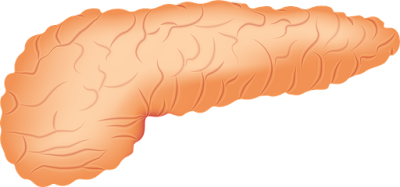Peppermint in the treatment of liver
The use of peppermint oil in the treatment of liver and biliary
Peppermint is a perennial plant of the Labiatae family, which is obtained by crossing above water mint and spearmint. It is not producing hybrid seeds germinated.Today, it is grown widely in Europe and North America.
Using the case of inclement weather and rains of the heated drying should not exceed 35 ° C. Is obtained as a raw material peppermint leaves.
Keep it in an airtight container in a dark, dry and cool.
Steam distillation of the water and herb leaves, peppermint oil results in mint, which is a separate therapeutic material, which can be prepared by freeze menthol.
Operation of peppermint
Extracts of peppermint, among others, secretory function of the liver. Increase the volume of gastric juice and bile, and this will facilitate the digestion and assimilation of food.At the same time acting relaxant and reduce intestinal smooth muscle tone, as well as biliary and urinary tract. Restore normal intestinal peristalsis, allow proper movement of intestinal contents and the departure of gases and prevent flatulence.
Prevent the stagnation of bile in the gall bladder. In addition, slightly increase the daily amount of urine.
It is also important antibacterial activity mint leaves, which is attributed to tannins and certain components of the essential oil (especially menthol and mentonowi).
After oral administration, however, it is limited only to the gastrointestinal tract and biliary tract, because menthol and menthone and excrete bile.
It is quite strong, and furthermore also effective against strains resistant to antibiotics.
The infusion of peppermint leaves has a slightly sedative and hypotensive, but that is of little practical significance.
Peppermint oil is similar to mint leaves, some of its properties (especially antiseptic, antispasmodic and sedative) are stronger, and the other much weaker.
Note! The most effective is sprayed as an aerosol. If it is thus applied to the skin and mucous membranes, it works locally strongly bactericidal, and pain, cooling and anti-inflammatory.Menthol, which is an essential component of peppermint oil, running less bile and antispasmodic from peppermint leaves, but it has powerful antiseptic.
If you give it externally to intact skin, it works antibacterial, anti -itch topical anesthetic and anti-inflammatory.
In addition, evokes a feeling of coolness. Like oil, menthol is more potent as an aerosol.
Note! Peppermint leaves and leaf extracts used at the recommended therapeutic doses, and even a bit higher, do not cause harmful effects. In contrast, peppermint oil, administered orally at doses of medicines, can cause abdominal pain, vomiting, and in large doses - imbalance and deep sleep. Oil and menthol applied externally can cause in sensitive individuals hives, itching, and redness of the skin. Do not use menthol nasal drops in small children.
The use of peppermint
In the alternative, used in cholelithiasis and jaundice, and in convalescence after myocardial hepatitis.
Peppermint leaves are a component of a mixture of herbal Cholagoga II Cholegran granules, powder Gastrochol used in diseases of the liver, biliary spastic and catarrh of the stomach and intestines.
Preparations of peppermint
The infusion of mint leaves: Bullshit 1 tablespoon leaves 1 1/2-2 cups of boiling water and infuse covered for 10 minutes. Let stand for 5 minutes and strain.Dosage: Drink after 1/2 cup to 1 hour. before eating in gastritis and lack of appetite, and after meals as an antispasmodic, carminative and stomachic.
Tincture of Mint (peppermint drops): use orally 20-40 drops in a glass of water 2-5 times a day for 30 minutes before eating as a means of stimulating digestion, and after eating as an carminative and stomachic.


Comments
Post a Comment